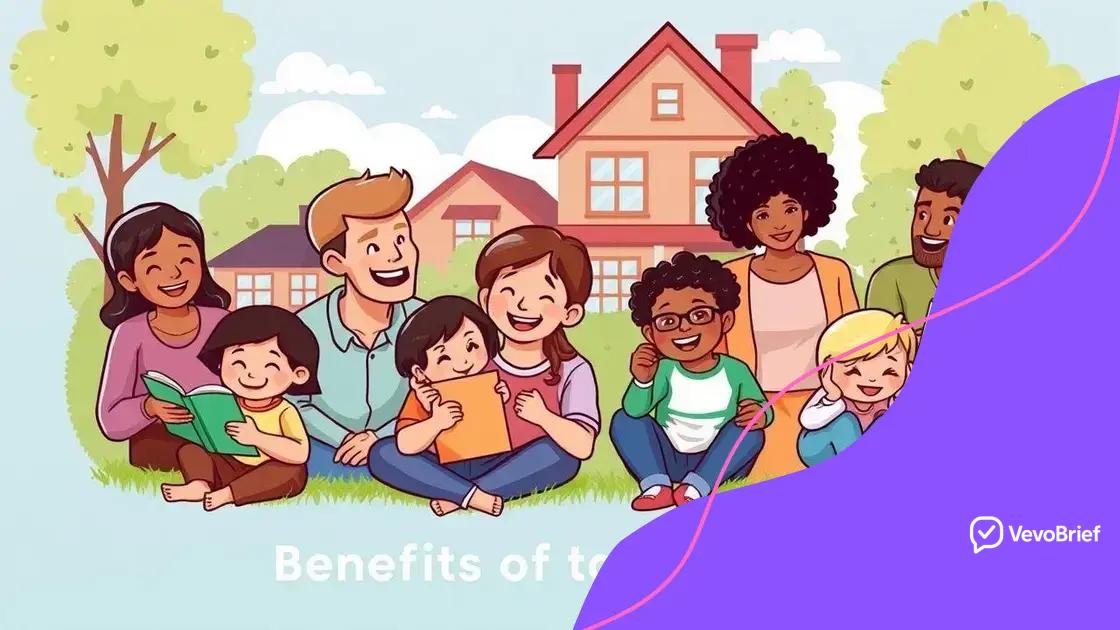Tax credit impact on poverty: what you need to know

Tax credits significantly reduce poverty by providing financial support to low-income families, helping them cover essential needs and improve their financial stability.
Tax credit impact on poverty is a crucial topic that affects many lives. Have you ever considered how these credits might change individual circumstances? Let’s explore their significance.
Understanding tax credits and their purpose
Understanding tax credits is essential when discussing financial assistance programs. These credits are designed to reduce the amount of tax owed, which can provide significant relief for families and individuals facing economic challenges. By lowering their tax burden, people can allocate more resources to meet their basic needs.
One of the main purposes of tax credits is to help lift people out of poverty. They provide a financial boost that can be especially important in tough economic times. When individuals and families receive tax credits, they have more disposable income, which can lead to improved living conditions.
Types of tax credits
There are several types of tax credits available, each serving different purposes:
- Earned Income Tax Credit (EITC): This is aimed at low to moderate-income working individuals and families.
- Child Tax Credit: Designed to assist families with children and reduce their overall tax liability.
- American Opportunity Tax Credit: Helps students and their families pay for higher education expenses.
- Lifetime Learning Credit: Provides support for those taking post-secondary education courses to acquire skills.
These tax credits not only alleviate financial stress but also encourage positive behavior, such as working more hours or investing in education. When more individuals utilize these credits, it can lead to broader economic growth, as people have more money to spend in their communities.
Tax credits play a vital role in ensuring that low-income families can cover basic necessities. They can also drive personal investments in education and job training. By offering financial support, tax credits empower individuals to take charge of their futures.
How tax credits alleviate poverty
How tax credits alleviate poverty is a critical aspect of understanding their role in our society. Tax credits have a direct impact on the financial well-being of families struggling to make ends meet. By reducing the amount of tax owed, these credits provide crucial support, allowing families to invest in essential needs.
This financial assistance helps lower the poverty rate by increasing disposable income. Families can use tax credits to pay for basic necessities, such as food, housing, and healthcare. When people are relieved from excessive financial burdens, they have the opportunity to focus on other aspects of their lives.
The role of tax credits in family stability
Stable family conditions are essential for raising children and fostering healthy communities. Tax credits contribute to this stability by:
- Providing immediate financial relief: Families can cover urgent expenses without falling into debt.
- Encouraging education: With additional funds, parents can provide better educational resources for their children.
- Enhancing job stability: Families can afford to invest in job training or better job opportunities.
To illustrate, consider a family that receives a Child Tax Credit. This can help them afford daycare or educational supplies, making it easier to work and support their children. Other families might use the Earned Income Tax Credit to pay off debts, providing a fresh start.
Tax credits not only alleviate immediate financial pressures but also empower individuals to build a better future. When families feel secure, they are more likely to contribute positively to their communities. Thus, tax credits play a fundamental role in breaking the cycle of poverty.
Real-life examples of tax credits in action

Real-life examples of tax credits in action highlight how these financial tools can transform lives. Understanding these examples makes it clear how effective tax credits can be at improving financial situations for many families.
For instance, a single mother named Sarah receives the Earned Income Tax Credit (EITC). This credit has allowed her to claim an additional refund at tax time, which she uses to pay off debts and save for her children’s education. The boost in her finances provides stability and a sense of hope for the future.
Case Study: The Child Tax Credit
Another example involves the Child Tax Credit. A family with three children experiences significant relief during tax season thanks to this credit. They receive funds that help them:
- Cover school expenses: Buying school supplies and clothes for their children.
- Afford extracurricular activities: Enabling their kids to join sports teams or music lessons.
- Improve living conditions: Paying for necessary home repairs.
Such financial aid improves their overall quality of life. Different families experience these impacts in unique ways, but the results are often the same: positive changes that uplift households.
Moreover, a low-income family utilizing the American Opportunity Tax Credit can afford their child’s tuition for community college. With this credit, they can invest in education, leading to better job opportunities in the future.
Studies often show that families benefiting from tax credits report higher levels of satisfaction and reduced stress. These real-life stories illustrate the broader impact of tax credits on alleviating poverty and helping families thrive.
Challenges in implementing tax credits effectively
Challenges in implementing tax credits effectively can greatly impact their ability to help those in need. While tax credits are designed to alleviate poverty, various factors can hinder their effectiveness.
One major challenge is the complexity of the tax system itself. Many eligible individuals may not fully understand how to claim these credits. This can lead to confusion and, in some cases, the underutilization of available financial benefits. Additionally, the language used in tax documents can be difficult for many people to navigate, creating barriers to access.
Administrative hurdles
Another significant issue is related to the administration of tax credits. Governments must have efficient systems in place to process claims and distribute funds promptly. Delays in processing can result in families not receiving the support they need when they need it most. Some of the administrative challenges include:
- Lack of resources: Insufficient personnel or funds can lead to slower processing times.
- Inconsistent information: Misinformation can create obstacles for applicants trying to claim their credits.
- Technological issues: Outdated software can hinder effective application processing.
Additionally, there can be societal barriers that affect the implementation of tax credits. Stigmas surrounding assistance can discourage eligible individuals from seeking help. This can perpetuate cycles of poverty, as many may opt to forego tax credits out of fear or shame.
Moreover, changes in tax policy may lead to confusion about eligibility, especially when new credits are introduced or existing ones are modified. Individuals may find it challenging to keep up with these changes and may inadvertently miss out on vital credits that could help improve their financial situations.
Future of tax credits and poverty reduction strategies
The future of tax credits and poverty reduction strategies is a vital area of discussion as society looks for effective ways to combat economic hardships. As we move forward, it is important to assess how tax credits can evolve to better serve communities in need.
Adapting tax credits to align with the current economic landscape is essential. For instance, there is a push to expand credits such as the Earned Income Tax Credit (EITC) to include more low-income families. This expansion would increase the financial support available and could play a significant role in reducing poverty levels.
Innovative approaches to tax credits
In addition, states are exploring new models to make tax credits more accessible.
- Automatic enrollment: Governments could automatically enroll eligible families in tax credits, minimizing the barriers to access.
- Increased outreach efforts: Awareness campaigns can help ensure that eligible individuals know about tax credits and how to apply for them.
- Targeted credits: Implementing credits that focus on specific needs, like housing or education, can ensure that support is given where it is most needed.
Furthermore, technology plays a key role in shaping the future of tax credits. Online platforms can streamline the application process, making it easier for individuals to claim their benefits. With the right tools, filing and managing these credits can become less daunting.
Finally, collaboration between government agencies, non-profits, and communities is crucial for enhancing tax credit programs. By working together, stakeholders can create strategies that effectively target poverty reduction. Discussions about reforming tax credits include assessing their efficiency and ensuring that they adapt to changing economic conditions.
FAQ – Frequently Asked Questions about Tax Credits and Poverty Reduction
What are tax credits?
Tax credits are financial incentives that reduce the amount of tax owed, helping to alleviate the financial burden on individuals and families.
How do tax credits help reduce poverty?
Tax credits provide essential support by increasing disposable income, allowing families to cover basic needs like food, housing, and education.
What are some challenges in implementing tax credits?
Challenges include complex application processes, lack of awareness, and administrative hurdles that can prevent eligible individuals from claiming their benefits.
What is the future of tax credits in poverty reduction?
The future includes adapting tax credits to meet current economic conditions, increasing outreach efforts, and using technology to streamline the application process.
